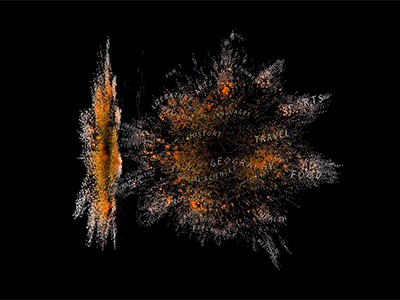This story is part of Nature’s 10, an annual list compiled by Nature’s editors exploring key developments in science and the individuals who contributed to them.
When Katsuhiko Hayashi and his colleagues announced in March that they had produced mouse pups from the cells of two male parents, the news literally floored some researchers. “I fell off my chair,” says Robert Gilchrist, a reproductive biologist at the University of New South Wales in Sydney, Australia. “It’s an astonishing scientific achievement.”

Nature’s 10: read the 2023 list
It was the culmination of years of painstaking work by Hayashi, a developmental biologist now at Osaka University in Japan. He and his team had previously devised methods for coaxing mouse stem cells into becoming immature eggs, or oocytes, then maturing them, fertilizing them and producing live pups (O. Hikabe et al. Nature 539, 299–303; 2016). This year, Hayashi revealed that his laboratory had built on that success by using cells from male mice to produce the eggs (K. Murakami et al. Nature 615, 900–906; 2023). Many researchers had thought the task impossible, or nearly so.
Hayashi, however, is more reserved in assessing what he achieved: “Actually, it’s not that difficult.”
Hayashi and his colleagues took cells from the tails of male mice, which have both X and Y sex chromosomes, and converted them into stem cells. In the process, roughly 3% of such cells spontaneously lose their Y chromosomes. The team then isolated these Y-less cells and treated them with a chemical that causes errors during cell division.
Some of those errors resulted in cells with a duplicated X chromosome, effectively making them female cells. The team then took these through the complex and laborious process required to make an egg. Each step is delicate and many cells are typically lost, says Mitinori Saitou, a developmental biologist at Kyoto University in Japan who collaborates with Hayashi.
The team fertilized the eggs and transplanted the resulting embryos into female mice. Only 7 live pups resulted from 630 embryo transfers.
Over the years, Hayashi has built a reputation for taking on tasks that are both formidable and imaginative. “I admire his work,” says Azim Surani, a developmental biologist and former mentor of Hayashi’s at the University of Cambridge, UK. “It’s very original.”
Collaborators past and present also point to Hayashi’s patience and work ethic. “He works like ten people,” says Daisuke Kitamura, an immunologist at Tokyo University of Science who supervised Hayashi’s PhD research.
Hayashi brushes aside this praise, too: “I really struggle to get everything done,” he says. “Sometimes I can’t manage to finish my work on time.”
Hayashi has wanted to study germ cells — those that naturally give rise to sperm and egg cells — since his undergraduate days, drawn by both their importance for reproduction, and how they live on through subsequent generations. “The germ line is the source of life,” he says. “And it is eternal. It is the only cell line that can survive indefinitely after differentiation.”
Now, his lab is looking to extend the work in mice to another animal: the northern white rhinoceros (Ceratotherium simum cottoni). There are only two known northern white rhinos alive today, and both are female.
Hayashi’s techniques could be a way to save the lineage, but growing rhinoceros sperm and eggs in the lab is much more difficult than working with mice, he says.
The complexity of working with human reproductive cells would be greater still. It could be decades before the techniques that Hayashi has pioneered to create egg and sperm could be used in humans, says Amander Clark, a developmental and stem-cell biologist at the University of California, Los Angeles. In the meantime, Hayashi largely stays out of ethical discussions that such work poses. “From the viewpoint of the scientist, we are relatively simple: we try to produce oocytes that have good quality,” he says. “But whether these kinds of oocytes should be used is not our decision. This decision should be made by society.”
